All products featured are independently chosen by us. However, SoundGuys may receive a commission on orders placed through its retail links. See our ethics statement.
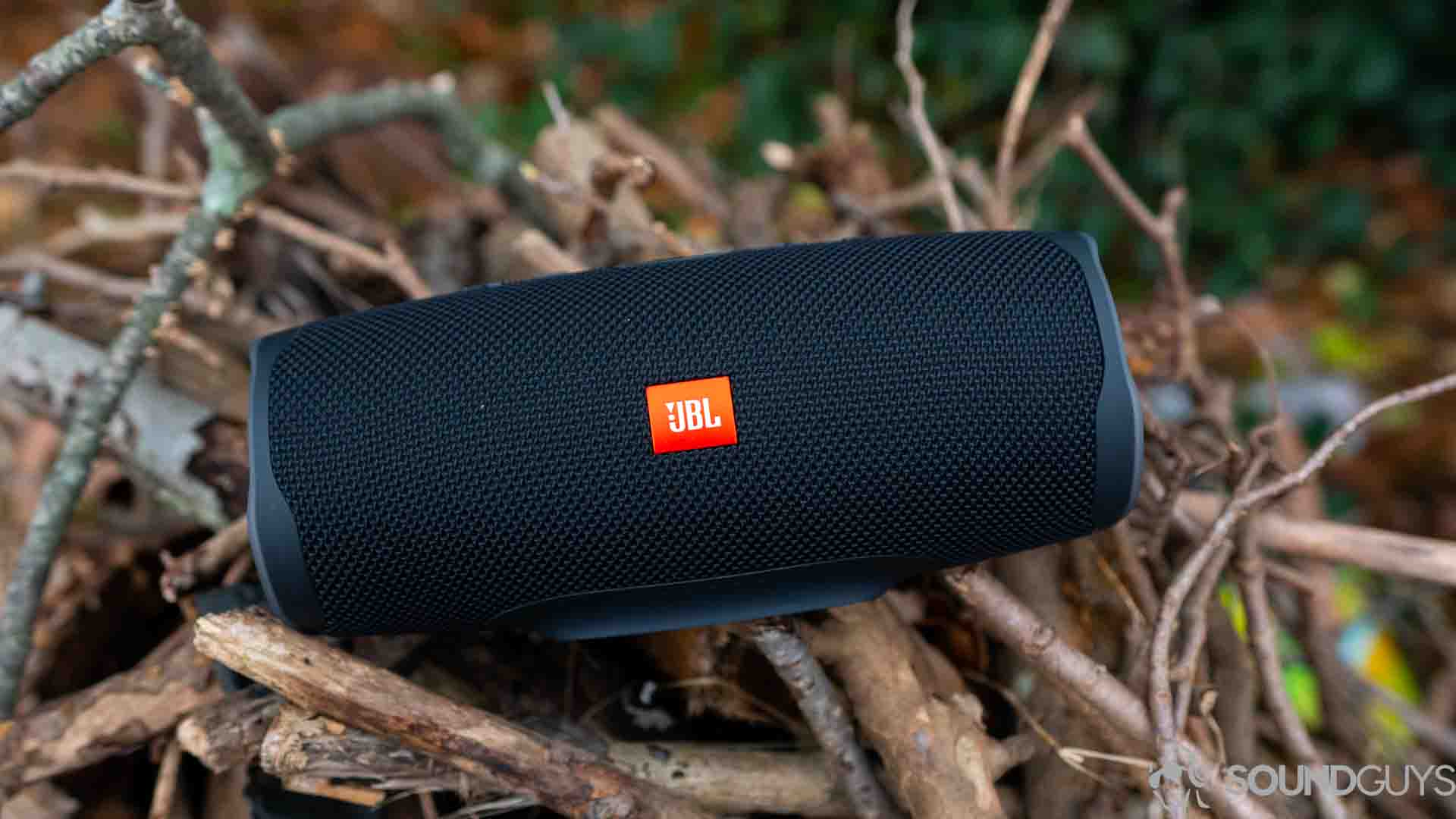
JBL Charge 4 review
Published onSeptember 18, 2023
JBL Charge 4
If you’re in the market for a Bluetooth speaker, one brand tends to come up more often than others. JBL has options at basically every price point, but for the price, its best speakers have always been the Charge series. The JBL Charge 4 speaker is a few years old, but you can still find it in various retailers. How well has it held up since the initial release?
Editor’s note: This review was updated on September 18, 2023, to note the discontinuation of the product and again on August 9th, 2024, for formatting.
What’s it like to use the JBL Charge 4?

At first glance, the Charge 4 doesn’t look like it’s any different than the previous Charge 3. But if you look a little closer, you notice a few slight differences in build and size. The Charge 4 is slightly bigger by roughly a centimeter in every way, but it’s also heavier by 165 grams (7.05 ounces). While that isn’t a huge deal, it’s not good news if you rely on the speaker’s portability. An ounce in the morning is a pound by the evening if you’re hiking. That said, it shouldn’t make a practical difference in everyday activities. You should be able to throw this in a backpack with no problem.
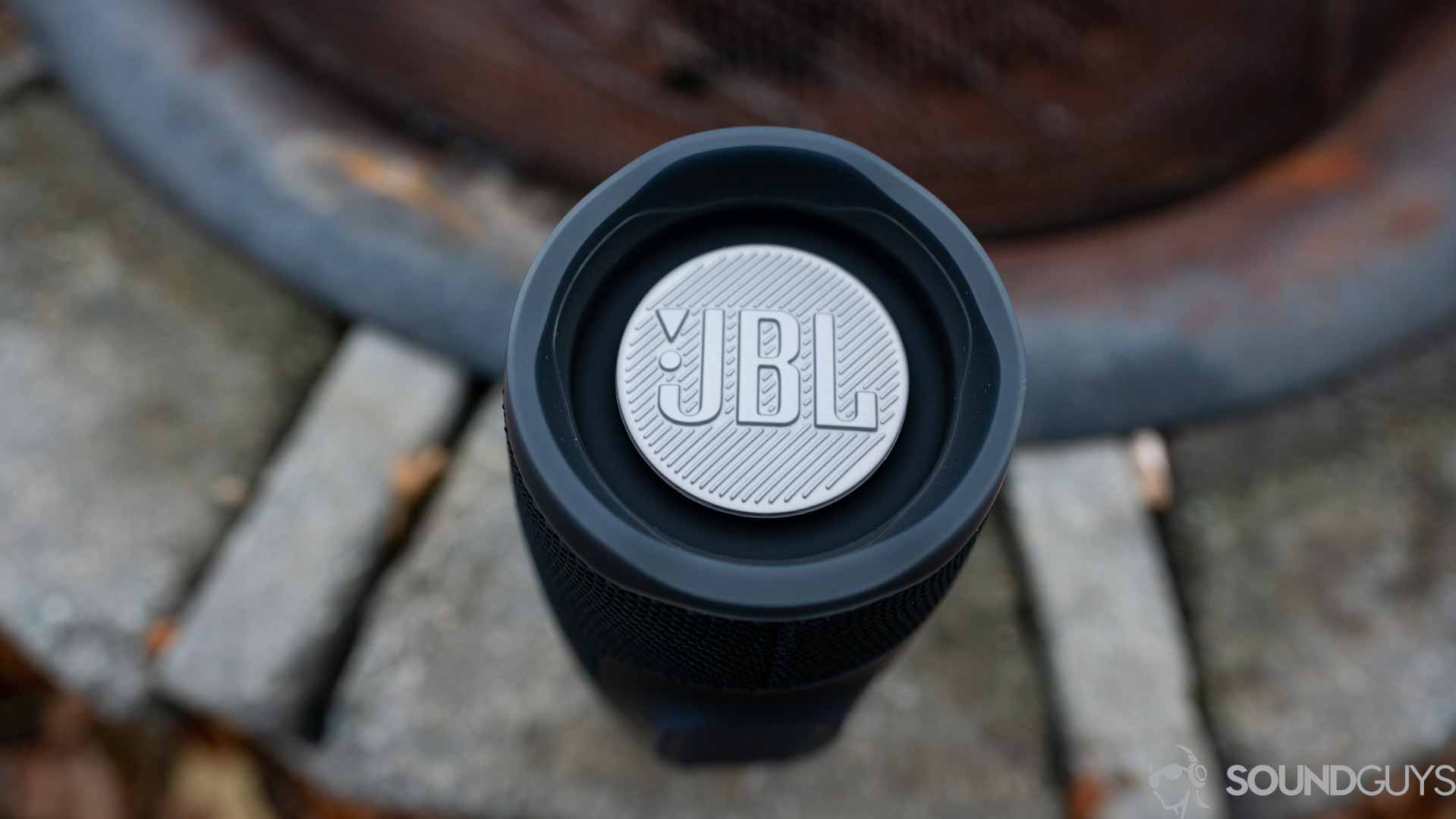
JBL also upgraded the battery from 6000mAh on the Charge 3 to around 7500mAh on the Charge 4. Besides that, the Charge 4 still keeps most of the features that made the Charge 3 so great.
Is the JBL Charge 4 waterproof?
Yes, the tough waterproof fabric makes a comeback along with the IPX7 certification that lets you submerge it for up to 30 minutes in a meter of water. It also floats for a bit if you drop it in the water, so you don’t have to worry about losing it if it falls off of a boat or a deck. These also have the characteristic exposed dual passive radiators on either end, like most new JBL speakers over the last few years.
Up top, you’ll get the playback buttons just slightly raised above the fabric and a power and Bluetooth button. The bottom is a small built-in stand with five tiny LED lights that let you know how much battery life is left when you tap the power button, and around the back is a rubber flap that keeps all of the ports protected from water. You’ll want to make sure this is closed if you’re going to take this to the beach or rocking out poolside.
How do I connect to the JBL Charge 4?
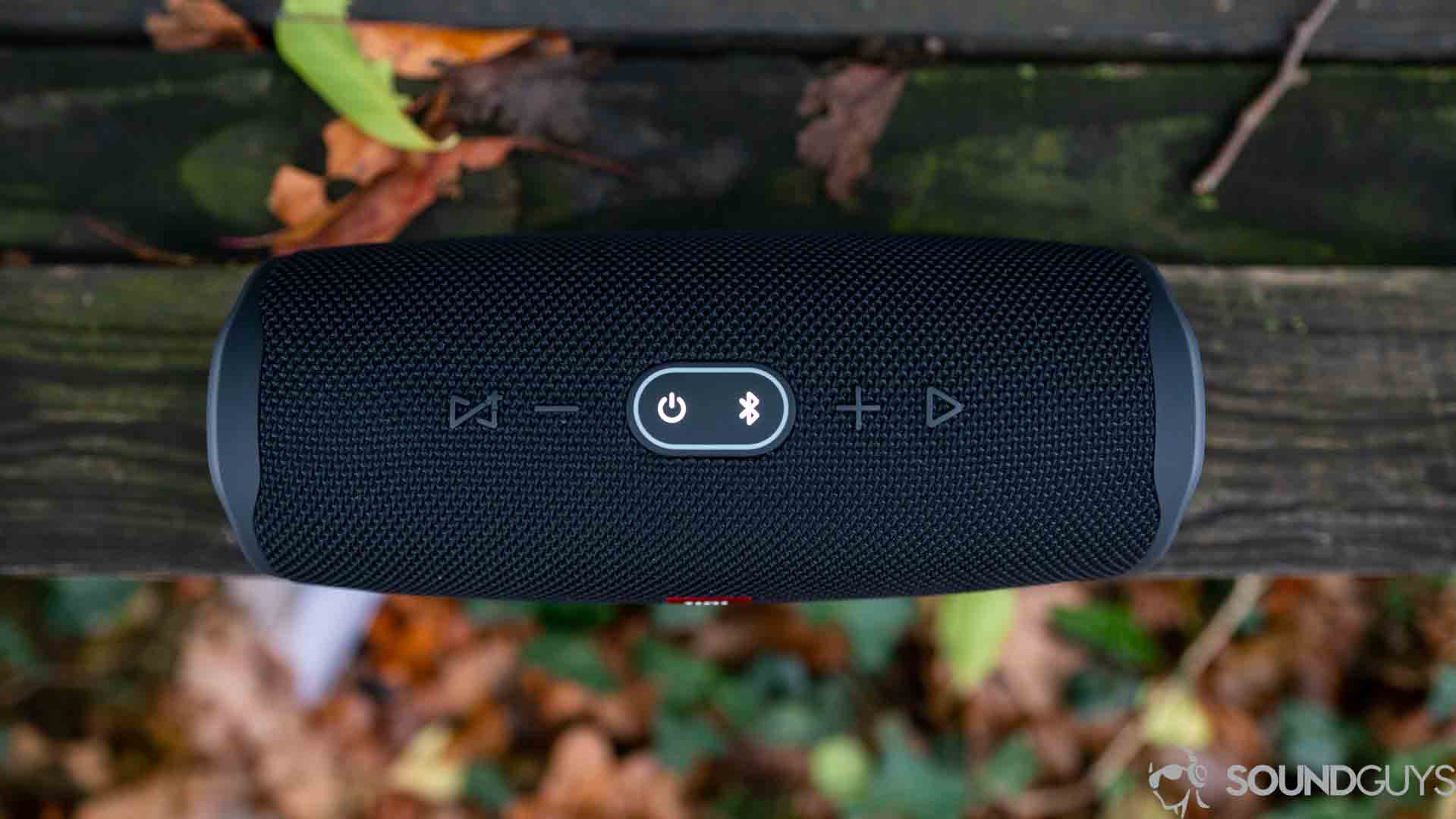
Connecting to the speaker might not be as simple as your AirPods, but it’s still pretty easy. As soon as you turn it on, all you have to do is press the Bluetooth button located next to the power button to enter pairing mode. From there, simply find the device in your Bluetooth settings to connect to it.
If you can’t tell yet, the JBL Charge 4 isn’t too different than the previous model. It’s an iteration on an iteration, but connectivity is where things start to split. The Charge 4 has all of your bases covered with a strong connection up to around 30 feet, just like most Bluetooth speakers. The playback controls work great, and the buttons are nice and clicky, though I wish the buttons were made of white plastic or lit up like the power button, as it’s hard to see which one is which when it’s dark. The Charge 4 also doesn’t have a built-in microphone so if you tend to use your speaker for phone calls you might be annoyed. I never want a mic on my speaker and always end up fumbling to disconnect my phone every time I get a phone call, so this is a positive thing for me, but I can see how that can be a deal-breaker for some.
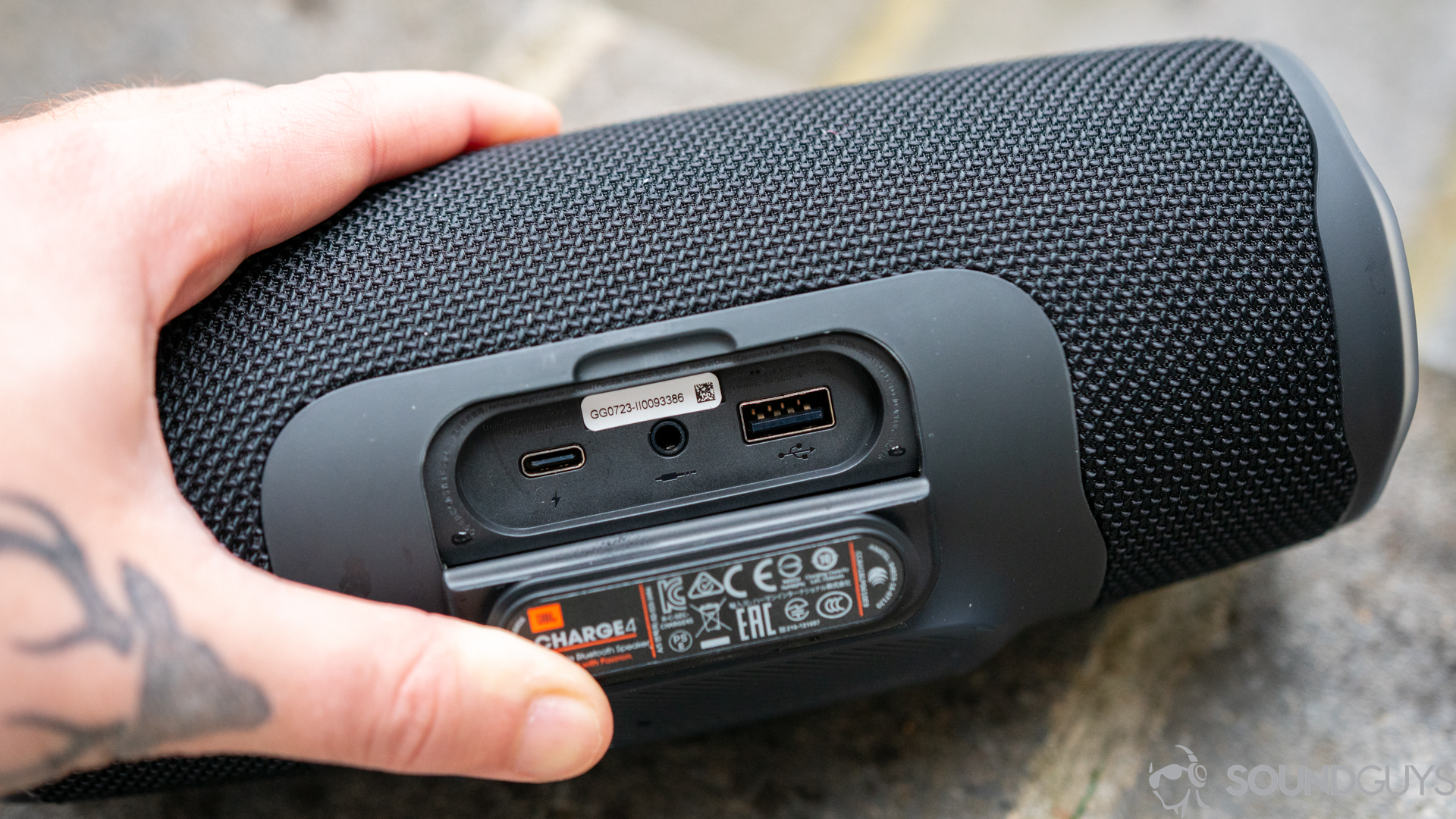
On paper, you’ll notice that the JBL Charge 4 has Bluetooth 4.2 instead of the older 4.1, which is nice, but the real differences have to do with JBL Connect. If you’ve never owned a JBL speaker, JBL Connect is the feature that allows you to sync up a few speakers together to play the same song. It’s not the equivalent of a Sonos system, but if you’re having a party, it could get the job done. JBL Connect+ is a better version of the older JBL Connect and lets you connect up to 100 JBL speakers instead of one or two. If you happen to have a mansion, this would be a cool party trick.
Unfortunately, if you bought an older speaker with the regular JBL Connect (like the Charge 3), it isn’t compatible with this new plus version. So, if you and a few friends will splurge on 100 of these and throw a “Project X” style party, this could be a feature you might be interested in. For the average person, I doubt it matters much.
How to reset the JBL Charge 4
If you’re having trouble connecting to your Charge 4, reset it and start from scratch. To do that, follow these steps:
- Go into the Bluetooth settings of your source device and delete the Charge 4 from your paired devices.
- Power on the speaker
- Once it’s powered on, hold down the Bluetooth button and the volume up (+) button simultaneously for a few seconds until the LED ring on the top of the speaker lights up. After it does this, the speaker should power down automatically.
- Power the speaker back on. It should enter pairing mode automatically, and you can locate it in your Bluetooth settings.
How’s the battery life of the Charge 4?
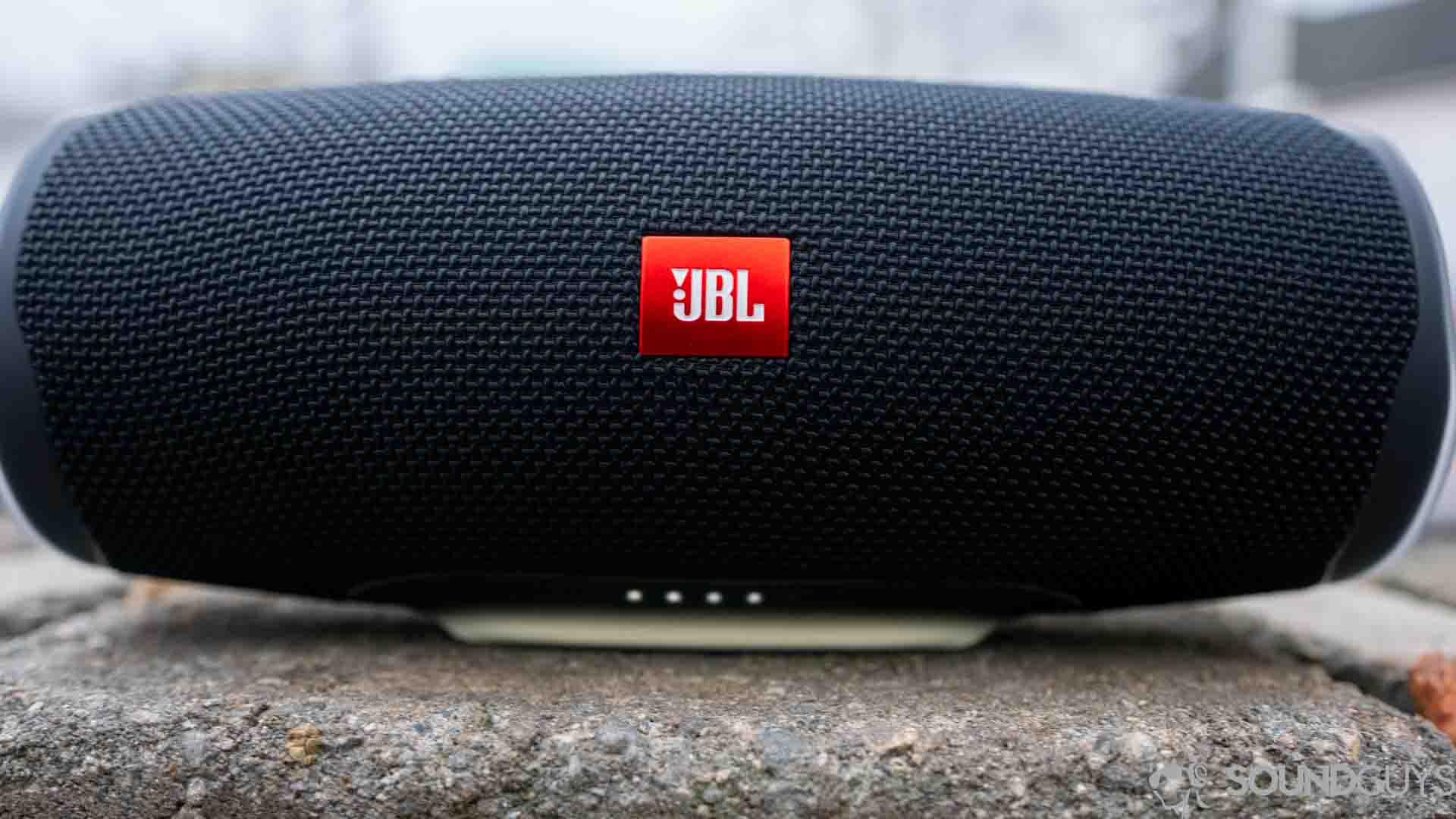
Even though the JBL Charge 4 has a battery with a much larger capacity than the Charge 3, they’re still touted as having an identical 20 hours of constant playback. During our testing, we managed to get the Charge 4 to pump out music for 13 hours and 46 minutes straight. It wasn’t quite the 20 hours promised, but it’s still not bad. That will take a hit, though, if you decide to also charge your devices via the USB-A output on the back. You’ll also find a 3.5mm and USB-C input on the back, but the Type-C can only be used for charging. So, if you have a Type-C to Type-C cable and were hoping to charge your new Android phone or iPad Pro through that port, you’re out of luck. You have to use the USB-A port for everything charging-related.
Does the JBL Charge 4 sound good?
This was the part where I was most surprised because I expected the sound quality to improve over the Charge 3, but it is highly similar to my ears. JBL went with a single driver over dual drivers this time around, but besides a few minor complaints, I don’t think many people who buy this speaker will notice. Like the previous model, the new JBL Charge 4 has a solid low end for its size, which is undoubtedly helped by those passive radiators.
Like the older Charge 3, this model will sound better in larger rooms and open areas—primarily because bass tends to lose power over distance faster than higher-pitched sounds. If you use the Charge 4 in a barn, yard, or garage, the sound will drop a little bass emphasis and sound a little more pleasing to you.
The sound signature and quality of the JBL Charge 4 is nearly identical to the JBL Charge 3.
Bass notes throughout the song Tearing at the Seams by Nathaniel Rateliff & The Night Sweats were distinct and easy to follow along with, but the speaker suffers from the same lack of clarity in the mids that the last model did. Vocals were still discernible, but they sounded like they were taking the backseat to some of the instrumentation of the song.
This was especially true in the song Lost on You by LP, where the vocals sounded like they competed with the strings and background melodies throughout the chorus. If you’re a lover of the high-end, you don’t have to worry because nothing sounds harsh, and I didn’t hear any distortion at high volumes, either. Overall, it seems like JBL just focused on tuning the speaker to sound as close as possible to the Charge 3, and it’s impressive how close they got, considering the move to only one driver. But if you liked how the last Charge 3 sounded, you’ll like this one too.
Should you get the Charge 4?
Now that the Charge 4 is discontinued, you may be able to find it in stores with old stock. However, unless you can get it for a steep discount, it’s not worth searching hard for this product. It won’t be available for very long.
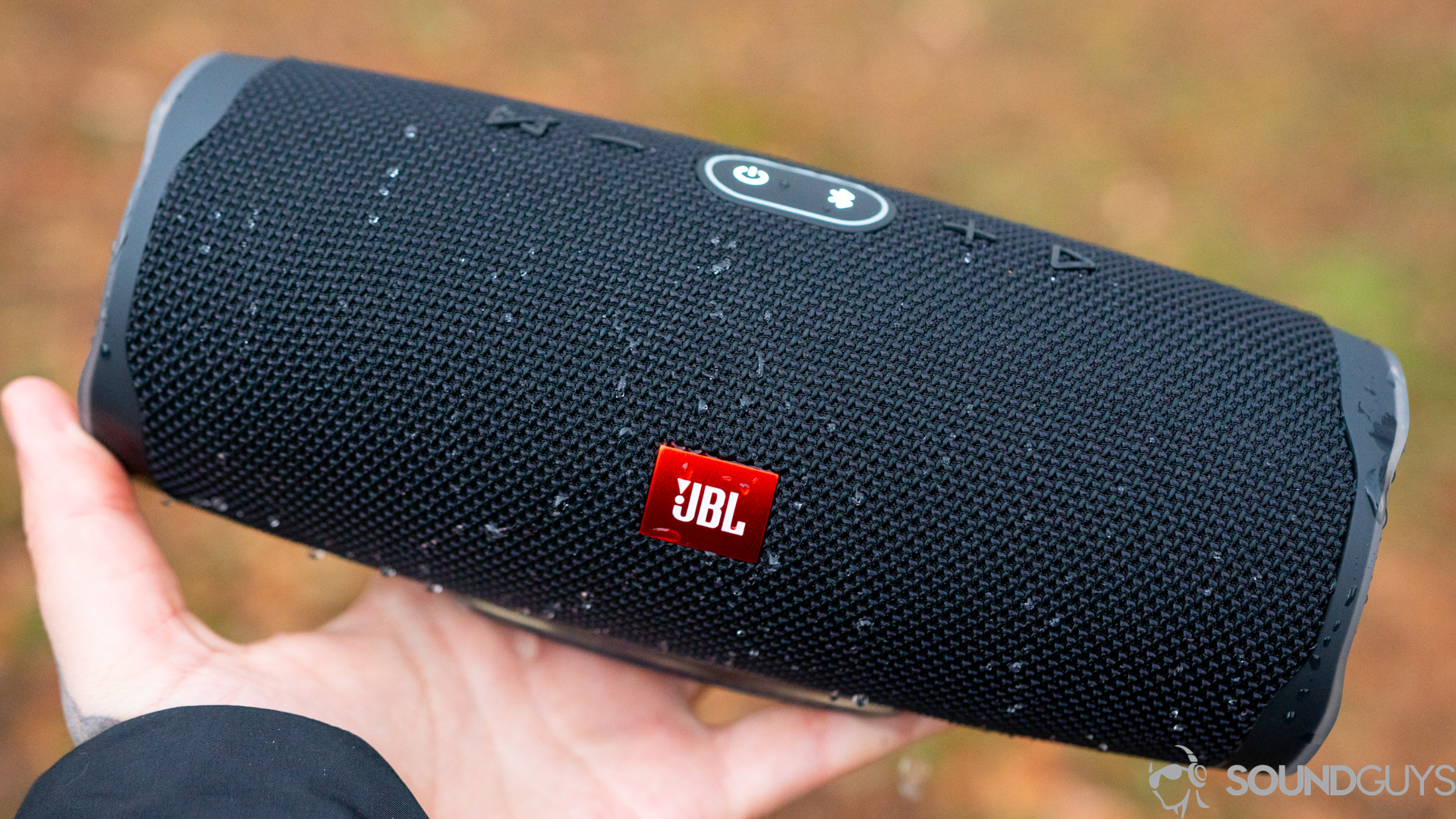
The JBL Charge 4 is only worth the money if you can find it for a very good deal. Otherwise, you’re better off springing for the JBL Charge 5 with its newer tech, better battery life, and better ingress-protection rating. For those interested, read our in-depth JBL Charge 5 review.
If you’re looking for an alternative, check out the Sony SRS-XB32. It has a similarly powerful sound and fun LED lights. It’s also got an IP67 rating. If you want to stay within the JBL sphere but just want a more portable speaker, the JBL Flip 5 is one of the best waterproof Bluetooth speakers out there.

Frequently asked questions
The sound won’t be as big and powerful as, say, bookshelf speakers because of the sheer size difference, but it should be fine for casual listening. Another option we’d recommend looking into is soundbars, especially if you plan to put a TV in your lounge.
No matter where you buy the JBL Charge 4 from, JBL covers you with a 1 year warranty to replace a defective product. If you want to buy a refurbished speaker, you can check JBL’s website, and it’s common for Amazon to put JBL’s products on sale.
This speaker isn’t explicitly billed as an at-home speaker since portability is one of its main features. However, that doesn’t mean you can’t do so; in fact, one of Lily’s favorite speakers to use in the apartment is the portable Bose SoundLink Micro.
To enable “Low-Frequency Mode”, press the Bluetooth and Volume – buttons simultaneously for 10 seconds.